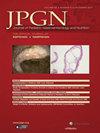Increased enteral lipid supplementation is not associated with weight gain in extremely preterm infants with sufficient energy intakes.
IF 2.4
3区 医学
Q3 GASTROENTEROLOGY & HEPATOLOGY
引用次数: 0
Abstract
OBJECTIVES Practices for fortifying human milk vary among neonatal intensive care units (NICUs). It is unclear whether enteral energy intake above 140 kcal/kg/day with increased fat supplementation leads to greater weight gain in breastmilk-fed extremely preterm (EPT) infants. METHODS Anthropometric and nutritional data were collected from clinical records for Swedish EPT infants born between gestational weeks 26 + 0 and 27 + 6. Included infants were treated at NICU A (n = 17) or NICU B (n = 39). The primary outcome was change in standard deviation (SD) scores (ΔSDS) for weight between postmenstrual weeks 29 + 0 and 34 + 0. RESULTS At birth, the mean gestational age was 26.9 (±0.45 SD) weeks and the mean birthweight was 969 (±107 SD) g. Between postmenstrual weeks 29 + 0 and 33 + 6, the energy intake was significantly higher at NICU B: mean (SD) 149 (±14.9) versus 132 (±11.2) kcal/kg/day, p ≤ 0.001. This was driven by a higher fat intake at NICU B: mean (SD) 7.97 (±1.05) versus 6.20 (±0.92) g/kg/day, p ≤ 0.001, which in turn was explained by more liberal use of lipid supplements at NICU B. No significant differences were found in ΔSDS for weight, length or head circumference between the two NICUs. CONCLUSIONS Despite considerable differences in energy intake due to the use of enteral lipid supplements, our study showed no differences in ΔSDS for weight, length or head circumference. This may be due to limited fat absorption in infants already receiving adequate energy and fat, and poor absorption of fat from human donor milk.在能量摄入充足的极早产儿中,增加肠道脂质补充与体重增加无关。
目的各新生儿重症监护室(NICU)对母乳进行强化的做法不尽相同。目前还不清楚肠道能量摄入量超过 140 千卡/千克/天并增加脂肪补充是否会导致母乳喂养的极早产儿(EPT)体重增加。纳入的婴儿在新生儿重症监护室 A(n = 17)或新生儿重症监护室 B(n = 39)接受治疗。主要结果是月经后第29 + 0周和34 + 0周之间体重标准差(SD)评分(ΔSDS)的变化。 结果出生时平均胎龄为26.9(±0.45 SD)周,平均出生体重为969(±107 SD)克。在月经后第 29 + 0 周至 33 + 6 周期间,新生儿重症监护室 B 的能量摄入量明显高于新生儿重症监护室 A:平均(标态)为 149(±14.9)千卡/千克/天,而新生儿重症监护室 B 为 132(±11.2)千卡/千克/天,P ≤ 0.001。这是因为新生儿重症监护室 B 的脂肪摄入量更高:平均(标清)7.97(±1.05)克/千克/天对 6.20(±0.92)克/千克/天,p ≤ 0.001,而这又是因为新生儿重症监护室 B 更多使用脂质补充剂。结论尽管因使用肠内脂质补充剂而导致能量摄入量存在很大差异,但我们的研究表明,两所新生儿重症监护室的体重、身长或头围的ΔSDS没有差异。这可能是由于婴儿已经摄入了足够的能量和脂肪,但对脂肪的吸收有限,以及对人奶中脂肪的吸收较差。
本文章由计算机程序翻译,如有差异,请以英文原文为准。
求助全文
约1分钟内获得全文
求助全文
来源期刊
CiteScore
5.30
自引率
13.80%
发文量
467
审稿时长
3-6 weeks
期刊介绍:
The Journal of Pediatric Gastroenterology and Nutrition (JPGN) provides a forum for original papers and reviews dealing with pediatric gastroenterology and nutrition, including normal and abnormal functions of the alimentary tract and its associated organs, including the salivary glands, pancreas, gallbladder, and liver. Particular emphasis is on development and its relation to infant and childhood nutrition.

 求助内容:
求助内容: 应助结果提醒方式:
应助结果提醒方式:


